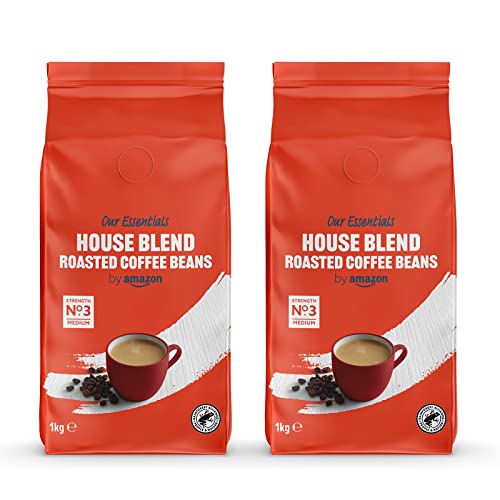Types of Coffee Beans
Behind every cup of coffee we drink there are beans that have been carefully graded. These beans are analyzed by their size, color, shape and density.
The AA grade is given to coffee beans that satisfy all the above criteria except they shouldn't have more than three deficient quality (quakers). Typically these are Kenya AA beans.
Arabica
Arabica coffee beans are also known as Coffea Arabicica and are the most sought-after coffee in the world. According to legend, coffee was discovered by the goatherder of Ethiopia after he observed that his animals had more energy when they ate the fruits of the plant. This inspired him to experiment with roasting seeds and brewing the coffee, resulting in the drink that we love today.
Although a variety of coffee plants exist, there are only two major species used as the base for our favorite coffees: robusta and arabica. The taste of the final beverage is typically more appealing with the first.
There are a number of different cultivars of arabica, with each one possessing its own unique flavor profile. Two of the most famous varieties are Typica and Bourbon which are the basis for all other arabica varieties were developed either by natural mutation or through deliberate crossbreeding. Scott Labs developed the SL28 cultivar in Kenya which is famous for its distinctive chocolaty flavour.
The taste of the arabica variety is contingent on the conditions in which it was planted, and also the way it was handled and cooked. strong coffee beans of shade the tree gets can have a significant effect on the final product.
Robusta

Robusta coffee beans (Coffea canephora) are the second most popular variety of coffee beans. They are the beans used to make the majority of instant drinks and have twice the amount of caffeine as Arabica Coffee Beans. They also are used to make a variety of espresso blends including cappuccino, caffe latte and other coffee drinks.
The Coffea Canephora plant originated in Sub-Saharan Africa, but it is now grown throughout the world. It can thrive at lower elevations, and can withstand higher temperatures than Arabica coffee plants, making it more suitable for farmers. Vietnam is the world's biggest producer of robusta, followed by Brazil and Indonesia.
The robusta plant makes a wonderful coffee, but it's not a popular choice among cupping enthusiasts because of its bitter taste and burnt-rubber notes. It's often regarded as an inferior coffee and a majority of the major coffee companies employ arabica beans for their top-quality products.
The demand for specialty coffees is increasing, and small roasters are experimenting to make the most of its exceptional qualities. Our Valhalla Java coffee and Death With Coffee coffee are two examples. Both are exceptional robustas that are blended with arabica for the perfect balance between flavor and strength. These coffees come from Uganda which is a country in which robusta has been cultivated for a long time. Read more about these coffees.
Liberica
Liberica coffee beans are a rare variety that are not often used in the world. They are less than 2 percent of the world's consumption of coffee beans and are often overlooked since they do not contain as much caffeine. They have a distinctive taste that a majority of coffee drinkers find appealing.
Despite being very rare, Liberica coffee beans are still quite popular in some parts of Asia. They are particularly popular in Malaysia and Indonesia as they have an extensive Muslim population. The coffee industry in these countries has historically been very robust and drinking a cup of joe during prayer is a part of the tradition.
The history of Liberica coffee dates back to the 1890s, when a global outbreak of rusty coffee leaves killed the majority of the world's arabica crop. This caused coffee producers to search for a more robust plant that could thrive in tropical climates. They soon discovered the Liberica.
Liberica plants have a high tolerance for diseases and pests making them an ideal substitute for the devastated arabica crop. Liberica also has the ability to grow in hot temperatures and lower altitudes, which allowed it to thrive in the climate of Southeast Asia. Liberica beans are used to make the majority of the coffee that is produced in the Philippines and Indonesia.
Excelsa
Although it's not typical for coffee lovers to come across excelsa beans in their cups, these unique beans are starting to gain the reputation of having a distinct flavor. According to Komal Sable, a fifth generation coffee farmer with South India Coffee Co. They are "a variant of the liberica species that has a similar teardrop shape but are smaller in size." But despite this resemblance to the family it is important to remember that excelsa is technically not a distinct species.
So, it's bit hazy as to the best way to classify excelsa beans. classified and it's this confusion that has largely been at the root of the beans' absence in the world of coffee. Because of this, many growers, roasters, and brewers don't know how to cultivate and utilize these beans in a proper manner.
It's ultimately the individual's responsibility to decide if they like the flavor of excelsa. it may take some time to find the perfect blend. The key is to be open-minded and give each type of coffee a shot until you find one you truly love. If you do this, you'll be able to experience the full variety of possibilities these unique beans have to offer. It's an experience that's worth the effort.
